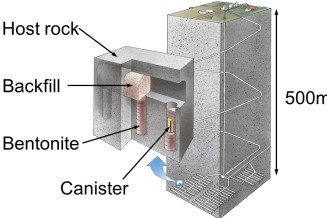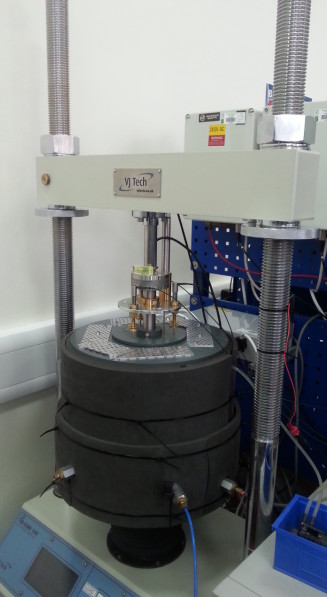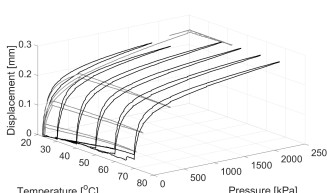Andrew Kirkham
Temperature-controlled oedometer testing on compacted bentonite
Graduated 2015 - MEng in Civil Engineering, Imperial College London
Worked in industry for 12 months – temporary works design
Started PhD in October 2016
Research background:
The application of the research is ‘deep geological disposal’ of nuclear waste. Currently, high-level (heat-emitting) radioactive waste is stored at surface level, in large water tanks. This is expensive, and unsustainable in the long term. One of the potential ‘permanent’ solutions is deep geological disposal of the waste within an underground repository. This scheme uses the concept of multiple barriers, which is illustrated in Figure 1.
Figure 1: Proposed scheme for a deep geological repository for spent nuclear fuel, showing the bentonite buffer between the canister and the host rock (Posiva, 2015)
A series of ‘engineered’ and ‘natural’ barriers give redundancy to the system. The natural barrier is the host rock within which the repository is situated, several hundred metres below ground level. The engineered barriers comprise the metal canister surrounding the waste, then a buffer material. The canister has a limited design life, which is potentially much shorter than the 100,000 years of containment required. The purpose of the buffer material is to prevent radionuclides from the waste reaching the host rock in the event of canister degradation. Bentonite clay has been proposed as a suitable buffer material.

Research Aims:
The aim of this research is to develop a new piece of laboratory equipment, which has been designed here at Imperial College London. This equipment, shown in Figure 2, is an oedometer which can be used under controlled temperature conditions.
Figure 2: The temperature-controlled oedometer being developed in this research
The research involves the modification, calibration and commissioning of the equipment. Data from the calibration process are shown in Figure 3. The objective is to provide high-quality data relating to the thermo-hydro-mechanical behaviour of soils. Laboratory data, obtained over a short time period, can be used to develop and validate numerical models, which can then simulate the full design life of a repository.

Figure 3: Results from the temperature calibration process, showing how the equipment is affected by temperature and axial pressure

References:
Figure 1:
Posiva (2015) Basics of the final disposal. Available from:
http://www.posiva.fi/en/final_disposal/basics_of_the_final_disposal [Accessed 11th
May 2018].


